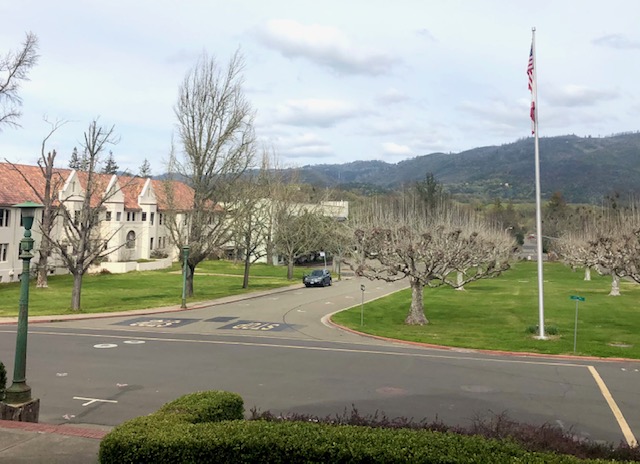Over the past several years, I have heard from countless constituents, in my district and across the county and region, sharing their ideas and eagerly awaiting updates on the land-use planning process for the Sonoma Developmental Center (SDC). After much anticipation, an update is coming – Permit Sonoma is releasing the draft land-use alternatives for SDC on November 1.
But first, a little background. The Sonoma Developmental Center, located in the heart of the Sonoma Valley, opened in 1891. Until the state decided to close the site in 2015, it was the oldest facility in California established specifically to serve the needs of individuals with developmental disabilities. It served as Sonoma Valley’s major employer, offering highly-skilled jobs to multiple generations of families. In 2018, SDC permanently closed, beginning the planning process for the 900-acre site. The California State Legislature delegated land use planning responsibility to Permit Sonoma, and allocated $3.5m to the County to hire and manage the project team and conduct a community-driven planning process. On April 5, 2019, the Sonoma County Board of Supervisors passed a resolution in support of a land use planning process, a three-year process currently underway, set to conclude in late 2022.
As such, our state partners have been important throughout the process, with the county working to meet state requirements for the site in its draft alternatives and to achieve mutual goals. These include the protection of open space and natural resources as a public resource, prioritizing housing, including affordable housing, housing for individuals with developmental disabilities, and more.
Dyatt & Bhatia, the land use planning team hired by Permit Sonoma, developed three draft alternatives with input from the community after receiving feedback at community meetings, focus groups, written comments and ideas and feedback from the Planning Advisory Team (PAT). The three alternatives demonstrate variations on the different priorities raised – as in all complicated processes such as this, not everyone shares the same exact vision. All three of the draft alternatives do, however, meet several shared goals, including: open space protection for 700 acres of land; housing, with an emphasis on affordable housing and housing for the developmentally disabled community, with a range in the number of units and income levels, presented across the three draft alternatives; pedestrian and bike paths that lessen automobile use; protection of riparian corridors, connections to the open space lands surrounding the campus and the surrounding Village of Glen Ellen, business sectors providing diverse living-wage jobs; agricultural uses; and more.
Important suggestions for the community to offer for the SDC specific plan might include specific employment and business sectors offering highly-skilled jobs to diversify the economy of the Valley, educational opportunities for those living on the campus and post-secondary and vocational education for the region, technology and incubator hubs, offices for nonprofits on the site, use of some of the buildings on the campus that are reusable for housing, services, education and employment, restaurants, and services for those living and working on the site, spaces for artists and creative activities, examples of housing built with resilient materials and defensible space, spaces for recreation and community gathering, small-scale agriculture and community gardens…the opportunities are endless. What is your vision for the future of the site, for our youth and diverse community?
While I look forward to taking a deep dive on the draft alternatives myself, and weighing the pros and cons of each, one of my top priorities for the SDC Specific Plan process is to hear from the community. There are already several planned community meetings this November; Sign up for updates on the project website: https://www.sdcspecificplan.com/sign-up-for-updates
After the community workshops this November, a preferred alternative will be developed and reviewed by the Board of Supervisors in January of 2022. People have expressed concerns about the large amount of housing units and development on the site. All of the proposed elements of the plan will be evaluated in a draft Environmental Impact Report. There will then be a hearing before the Planning Commission, before the final Planning Commission & Board of Supervisors Approvals in August and September 2022.
Ultimately, the Board of Supervisors and Planning Commission are responsible for approving the SDC Specific Plan. But as always, community feedback about the proposed alternatives and draft specific plan is welcomed at each step.
SDC has enormous potential, a once-in-a-generation opportunity. As we enter a new phase, I look forward to rigorous, constructive conversation and visionary ideas as our community considers the options for what will ultimately be transformative for our region. Please stay informed and participate!
Visit the SDC project team website and stay connected at https://www.sdcspecificplan.com/








Let’s take a deep dive into the economic, environmental and quality of life impacts of this plan.
I understand that the developer needs to make a profit to justify the huge amount of work to be done to improve SDC property. That said, I think the State, local residents and developer should work together to ensure that the ultimate design of the SDC redo is both profitable and considered in terms of the environmental impact of the plan. Plans should closely examine issues that include increased water usage, strain on an already over-encumbered traffic system (poor mass transit, traffic jams) and endangering of existing area wildlife. The wildlife corridor should be a part of every proposal. and the effect of building a New Town in Glen Ellen.
Let’s take a deep dive into who will most profit from SDC development. Who are the players and how are they connected to Sonoma County politics.
Disclose more, make the communication lines between taxpayers and government officials more effective. Development plans have not been clearly presented tom the public.
Had the Kenwood Press not put a front page article in their most recent publication, neither I nor most of my neighbors would not have understood the potential impact of development and the limited “alternatives” for development. Most people who read this article were horrified about how this issue has been mishandled by local government.
These three alternatives seem to be constructed to make the largest build out of residential development appear to be the most desirable. Why not offer the people to take the components of the various “alternatives” to help build a better development plan. Finally, let’s go back and review the various proposals of the past and consider the best of those plans.